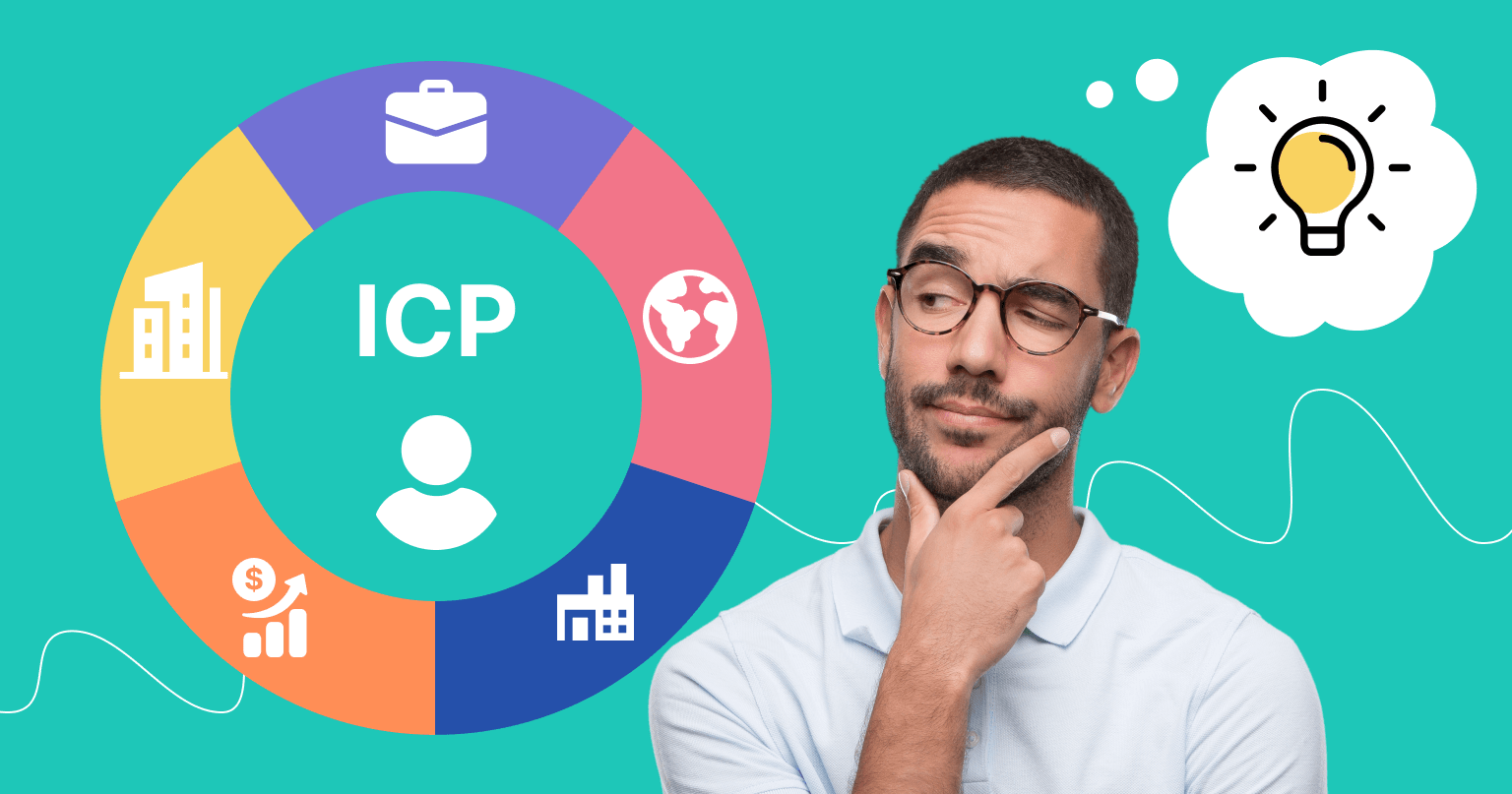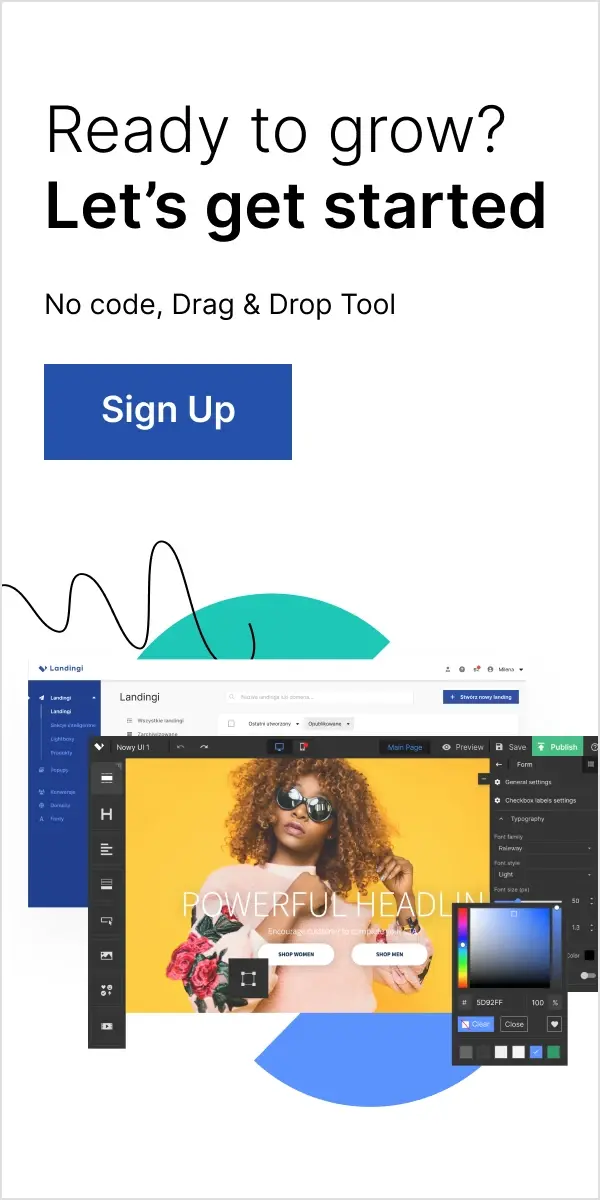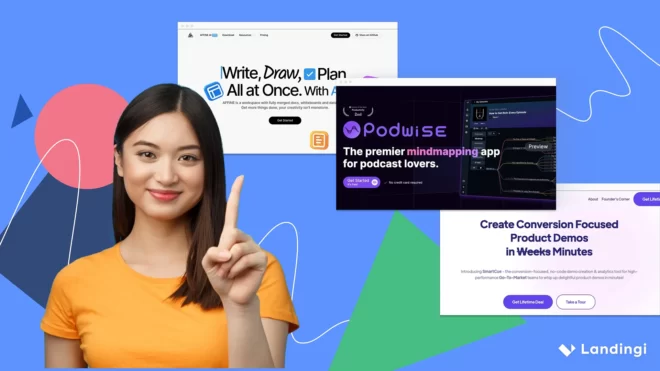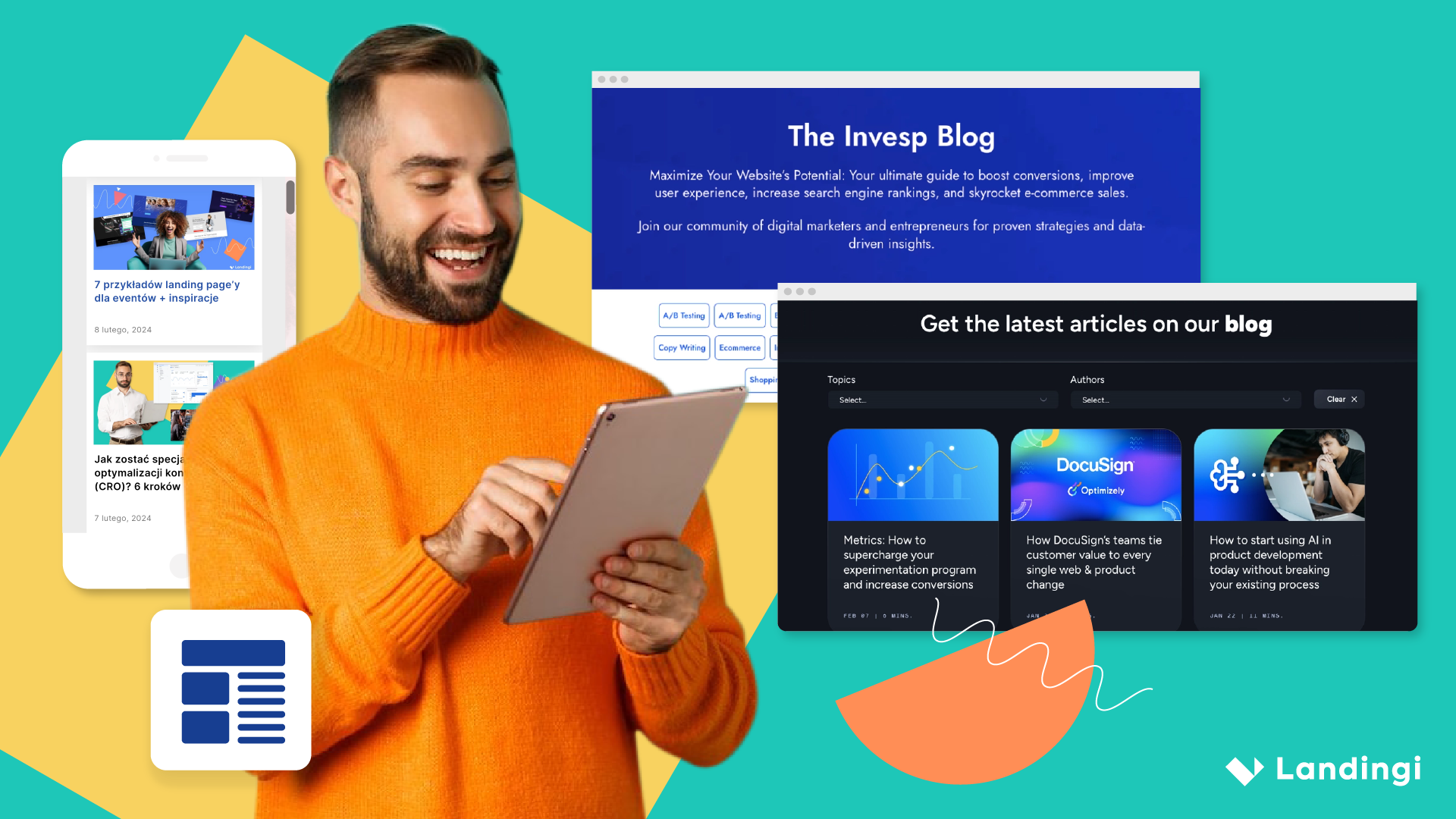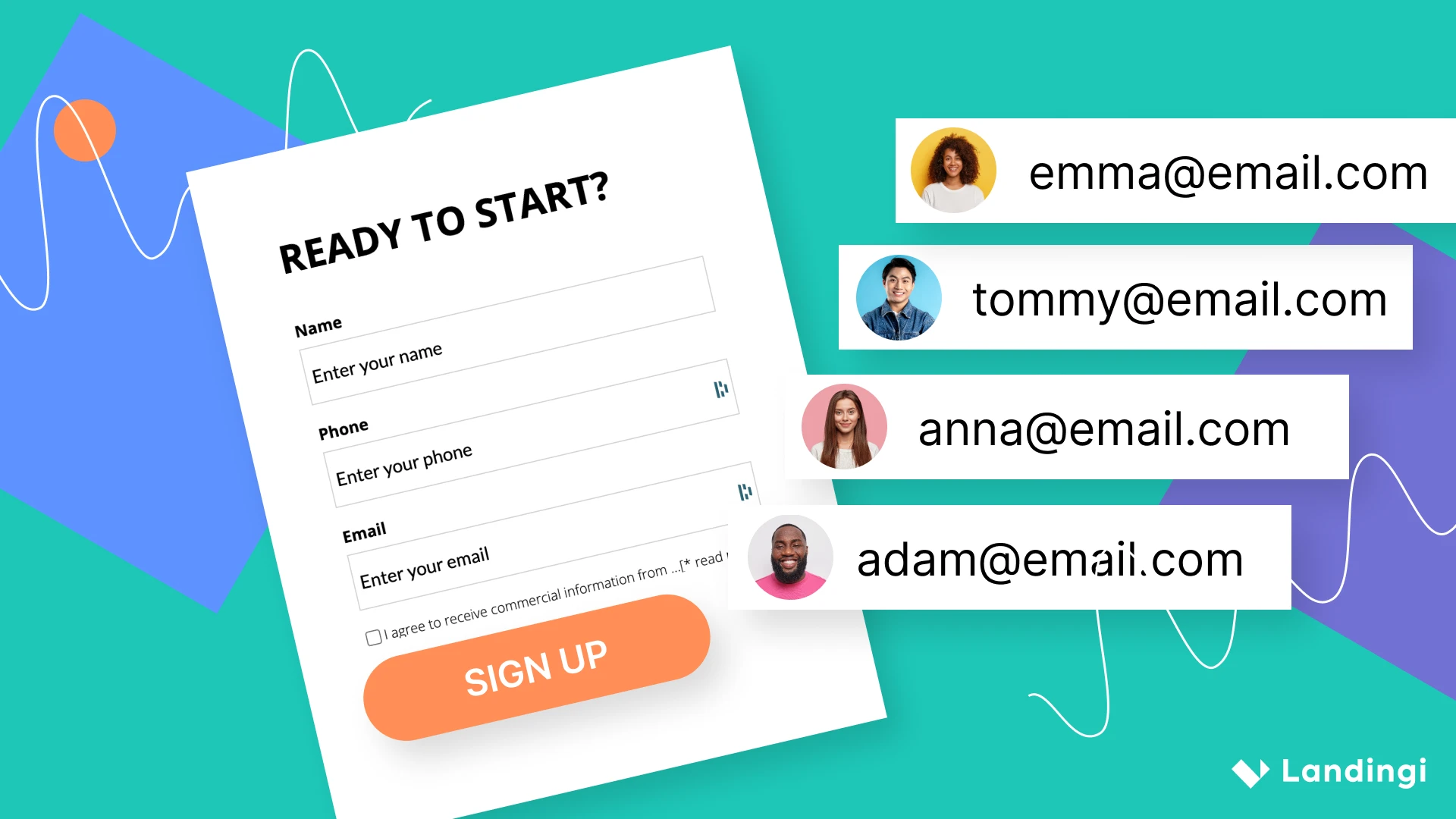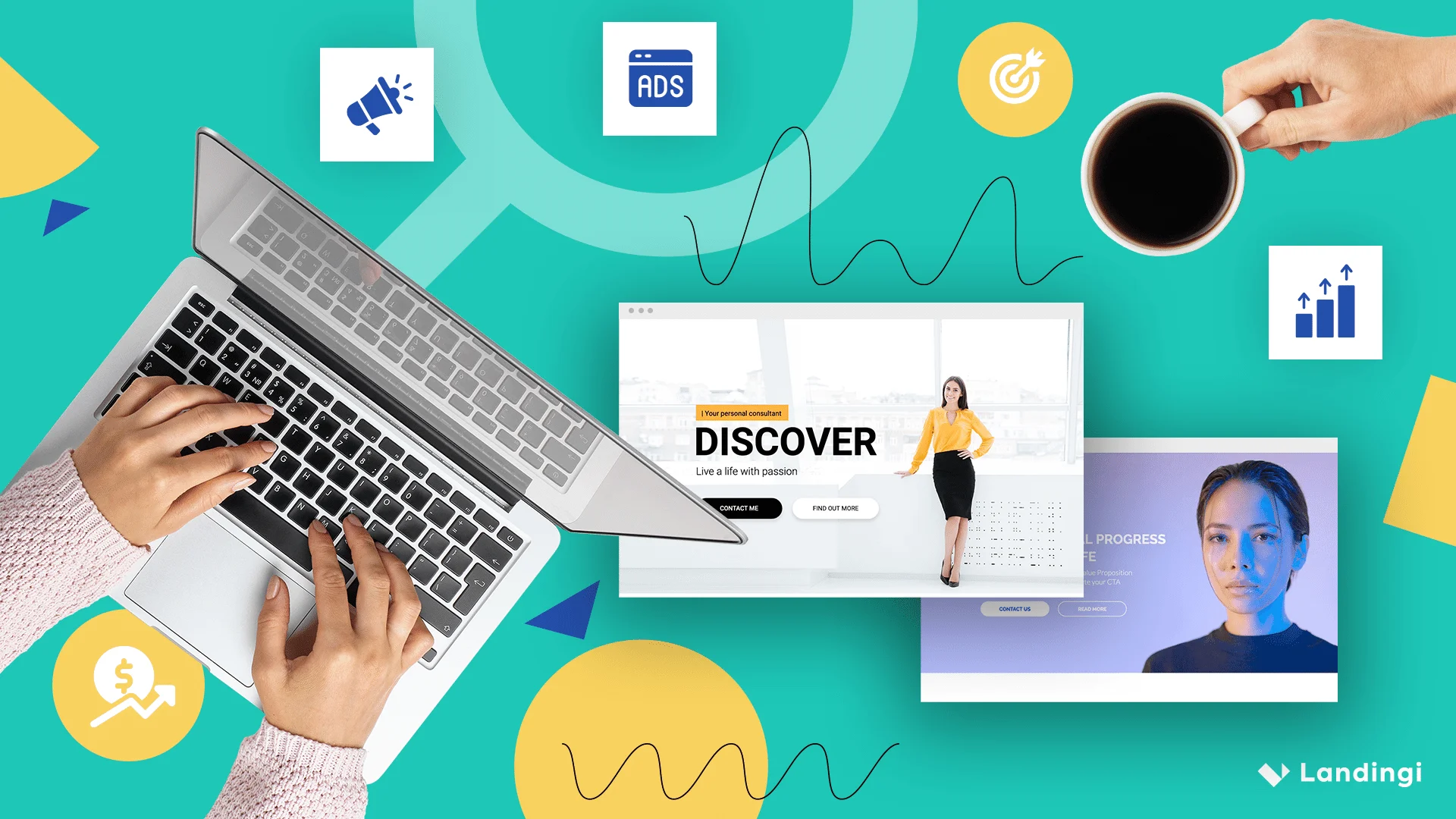Today, I will share some insights into the marketing world and explore the concept of ICP, or Ideal Customer Profile. If you need to get more familiar with the term, don’t worry – I’ll start with the basics.
Make your sections smartable and let go of mundane manual tasks with Smart Sections! An easy way to manage bulk changes.
What will you learn?
In the first section of the article, “Who is ICP in marketing?”, I’ll introduce the concept and explain how it differs from other popular marketing concepts like buyer personas. From there, we’ll move on to “How to use the ICP concept?” where I’ll provide some practical tips for implementing the ICP concept into your marketing strategy.
But that’s not all – I’ll also take a closer look at how the Ideal Customer Profile can be used to create effective landing pages and marketing campaigns in the section “How to use the concept of ICP when creating landing pages and marketing campaigns using landing pages?”. If that is something you, your sales team, or your marketing team find interesting, keep on reading.
Get 111 Landing Page Examples—The Ultimate Guide for FREE
Who is ICP in marketing?
What is the Ideal Customer Profile definition?
ICP stands for Ideal Customer Profile in marketing. An Ideal Customer Profile (ICP) describes the type of best customers or organizations that would derive the most value from your product or service. It’s a way of identifying the characteristics and attributes of the customers who are most likely to benefit from what you offer and who are also most likely to become long-term, loyal customers that sales and marketing teams look for.
Developing an ICP is essential in marketing because it allows you to focus your marketing efforts on the customers most likely to be interested in your offer. Customer profiling gives you an idea of how much value there is in your target customer and allows you to create a successful sales strategy. Identifying the right market segments and ideal customer profiles can help you improve your marketing efficiency and reduce customer acquisition costs.
By understanding your own ICP, you can tailor your messaging and marketing strategies to better appeal to this specific group of customers.

How to use and create the Ideal Customer Profile
The concept of ICP (Ideal Customer Profile) can be a powerful tool for businesses to identify and target their most valuable customers. Wondering how to create an ideal customer profile? Here are some steps to help you use this concept effectively:
1) Define your target market
The first step in creating an ICP is to define your target market. This includes identifying your ideal customer’s demographics, psychographics, and firmographics.
2) Analyze your current customers
Next, analyze the base of your existing customers to identify common characteristics and patterns. This data can help refine your target market and create a more accurate ICP. Ask your product team to help create such base.
3) Identify key attributes
Based on your analysis, identify the key attributes that define your ideal customer. These attributes include job title, company size, industry, buying habits, pain points, and more.
4) Develop messaging
Once you have identified your ICP, develop messaging that speaks directly to their problems, needs, and interests. This will help you connect with your ideal customers, increase the effectiveness of your marketing efforts, and improve the whole sales process.
5) Refine and adapt
Finally, it is important to continually refine and adapt your ICP as your business and target market evolves. Regularly analyze your customer and company data, and adjust your ICP accordingly to ensure that you are always targeting the right customers.
Using the ICP concept, businesses can improve their targeting efforts, increase customer acquisition, improve buyer’s journey, and ultimately drive growth and profitability.
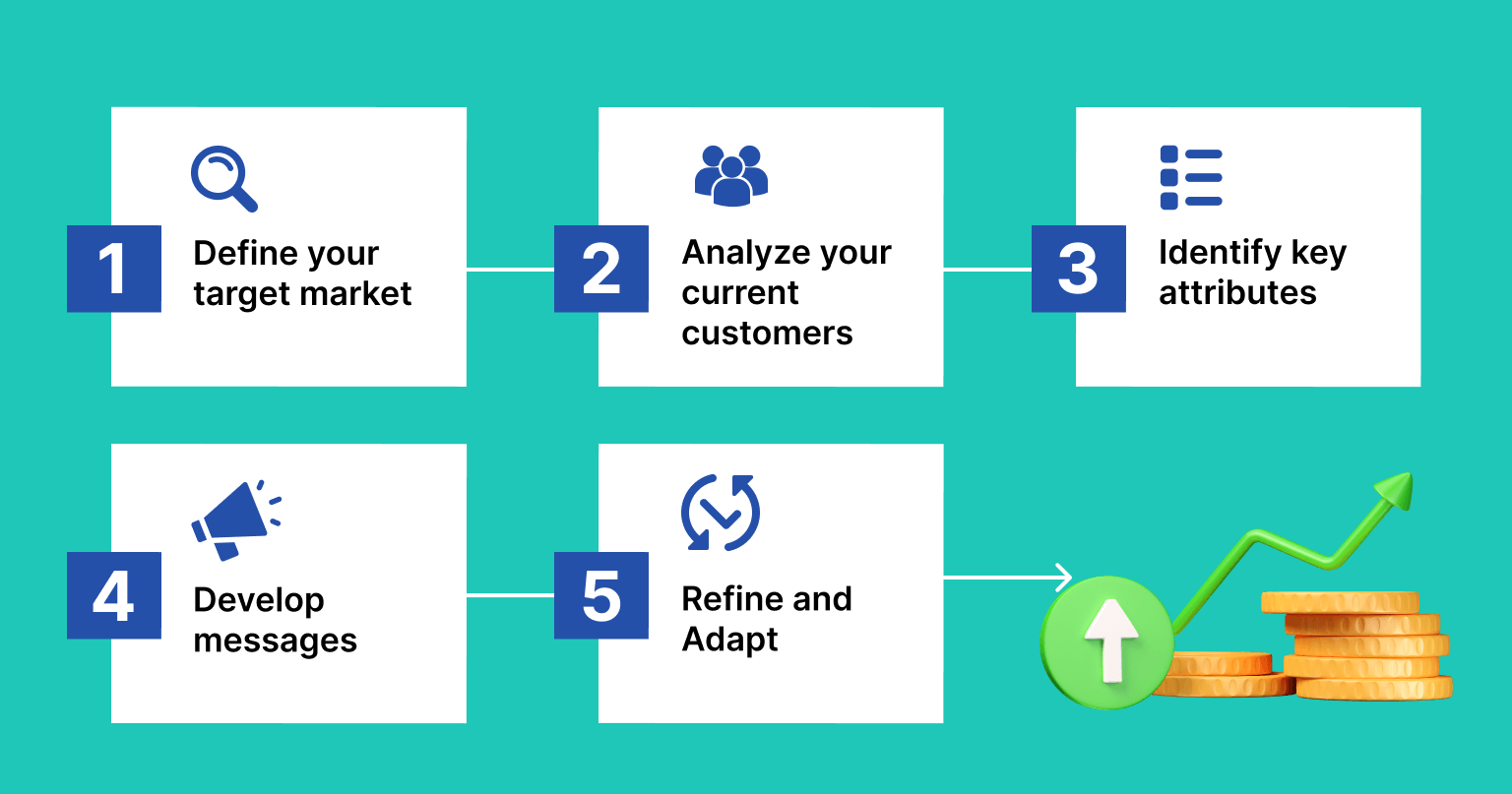
How is ICP different from Buyer Persona?
While Ideal Customer Profile (ICP) and Buyer Persona are commonly used in marketing, they are different in nature and purpose.
An Ideal Customer Profile is a broad description of the ideal customer for a company’s product or service based on firmographic data (e.g., company size, industry, location, revenue, etc.) and behavioral data (e.g., purchase history, engagement levels, etc.). It’s a way of identifying the characteristics and attributes of the customers who are most likely to benefit from what you offer and who are most likely to become long-term, loyal customers.
ICPs are typically used by B2B companies to identify the organizations or businesses that are most likely to purchase their products or services.
On the other hand, Buyer Personas focus more on the individual customers and their specific needs, behaviors, goals, and pain points. Personas are typically created through qualitative research, such as customer interviews, surveys, and website analytics, and they help marketers understand the motivations and behaviors of their target customers.
Buyer Personas are often used in B2C marketing to help create messaging that resonates with specific customer groups.
So, in summary, while an ICP is a broad description of an ideal customer based on data and characteristics, a Buyer Persona is a more specific and detailed representation of an individual customer’s goals, behaviors, and motivations. Both are important for effective marketing, but they serve different purposes and are used in different contexts.
To make sure you have a better understanding of the difference between an Ideal Customer Profile and a Buyer Persona, here is a simple comparison of both:
Ideal Customer Profile vs. Buyer Personas
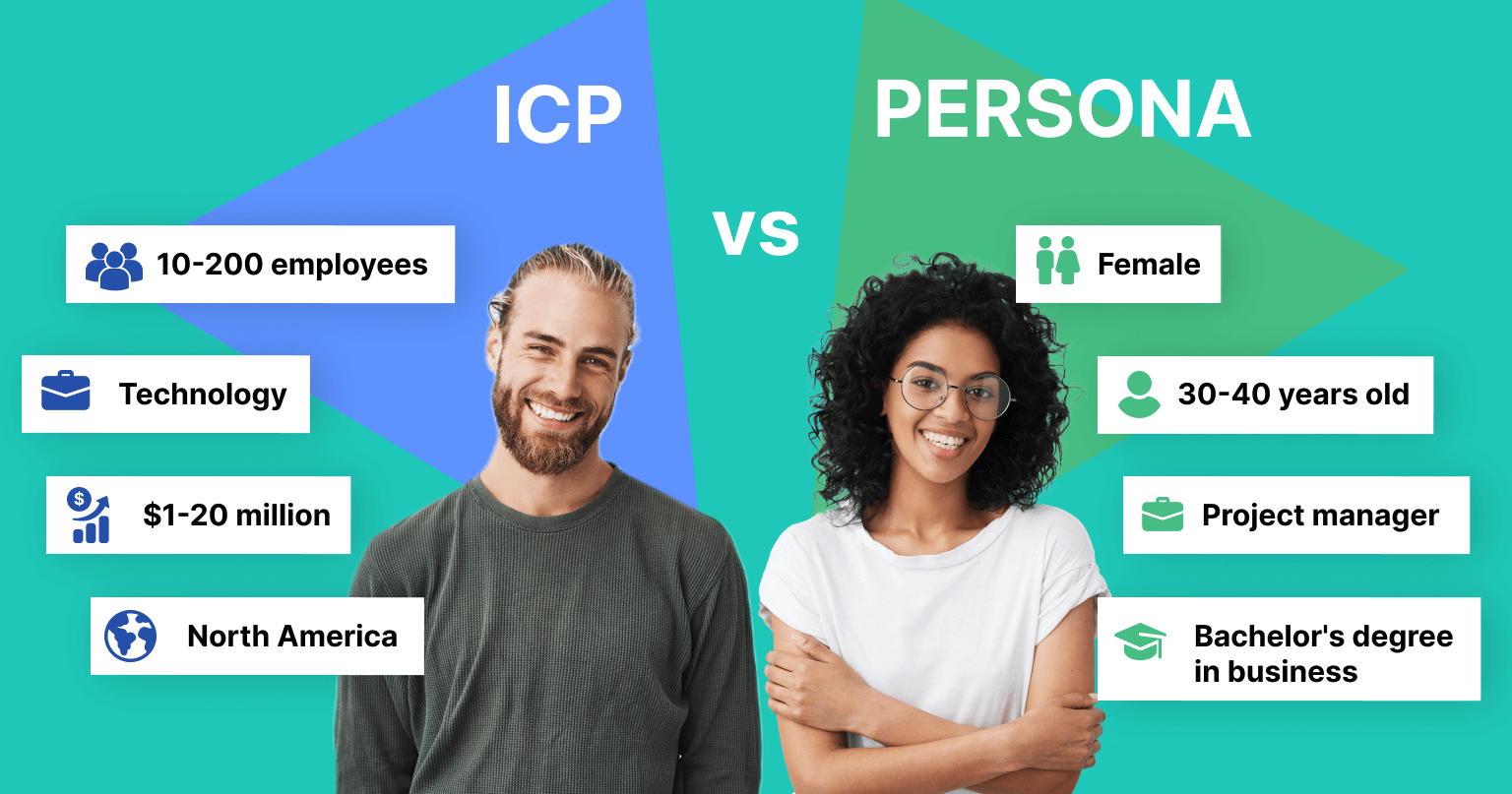
Example of Ideal Customer Profile (ICP)
An Ideal Customer Profile (ICP) is a description of the type of company or organization that would most benefit from your product or service. It is typically based on data such as industry, company size, revenue, location, and decision-making structure.
- Company size: 10-200 employees
- Industry: Technology, consulting, marketing, or creative services
- Annual revenue: $1-20 million
- Geographical location: North America
- Decision-making structure: Middle management or owner/CEO with decision-making authority.
Example of a Buyer Persona
On the other hand, a Buyer Persona is a fictional representation of an ideal customer that is created based on market research and data about your target audience. It includes information such as demographic data, behavior patterns, motivations, goals, and pain points. The purpose of creating a Buyer Persona is to gain a deeper understanding of your ideal customer to tailor your marketing, sales, and product strategies to better meet their needs and preferences.
- Name: Anna
- Demographics: Age: 30-40 years old
- Gender: Female
- Education: Bachelor’s degree in business or a related field
- Job title: Project manager or operations manager
- Company: Small to medium-sized technology or consulting firm
- Income: $70,000-$100,000 per year
- Goals and motivations:
- Wants to increase team productivity and efficiency Values ease of use and simplicity in project management tools Wants to save time on administrative tasks and focus on strategic planning
- Pain points:
- Frustrated with manual and time-consuming project management processesOverwhelmed with too many tools and systems to manage Struggling to collaborate effectively with remote team members
How to use the concept of ICP when creating landing pages and marketing campaigns?
Creating landing pages and marketing campaigns that use landing pages with the Ideal Customer Profile (ICP) in mind can help you achieve better results in terms of conversion rates and return on investment results.

Here are some tips on how to use the concept of ICP when creating landing pages and marketing campaigns:
- Understand your ICP: Before you create your landing pages and marketing campaigns, you need to have a clear understanding of your ICP. Identify the characteristics and attributes of your ideal customer, such as their demographics, interests, behaviors, and pain points.
- Create messaging that resonates with your ICP: Use the insights you have gained from understanding your ICP to create messaging that speaks to their needs, interests, and problems. This can help increase the relevance of your landing pages and campaigns, improving conversion rates.
- Tailor your landing pages to your Ideal Customer Profile: Your landing pages should be designed to appeal specifically to your ICP. This means using language, imagery, and design elements that are most likely to resonate with them. For example, if your ICP is made up of busy professionals, your landing pages should be designed to be easy to scan and should highlight the key benefits of your product or service.
- Use targeting to reach your ICP: Use targeting options such as demographics, interests, and behaviors to ensure, that your landing pages are being shown to the right audience. This can help ensure that you are reaching the people who are most likely to be interested in what you have to offer.
- Measure your results and optimize your landing pages: Use analytics to measure the performance of your landing pages and marketing campaigns and make adjustments based on what you learn. This can help refine your messaging and design to better appeal to your Ideal Customer Profile and improve your conversion rates over time.
By incorporating the ICP concept into your landing pages and marketing campaigns, you can create more targeted, practical marketing efforts that are more likely to resonate with your ideal buyers and drive better results.
How to clearly understand and describe ICP?
To clearly understand and describe the Ideal Customer Profile (ICP), you need to create a detailed description of the ideal customer for your offer. Here are some steps to help you create a clear and detailed ICP:
1) Identify your current customers
Start by analyzing your customer data base to identify the types of customers already buying your product or service. Look for patterns in their demographics, behaviors, and purchase history to identify the characteristics of your ideal customer.
2) Conduct market research
Conduct market research to identify the characteristics of the customers who are most likely to benefit from your products or services. This can include analyzing industry and sales cycle data, conducting surveys, and interviewing potential customers.
3) Develop a detailed description
Once you have identified the characteristics of your ideal customer, create a detailed report that includes information such as:
- Demographics: This includes information such as age, gender, location, income, and education level.
- Psychographics: This includes information such as values, beliefs, attitudes, and interests.
- Firmographics: This includes information about the organizations that your ideal customers work for, such as company size, industry, location, revenue, and job titles.
- Pain points: Identify the problems and challenges that your ideal customers are facing, and describe how your product or service can help them overcome these challenges.
- Goals: Identify the goals that your ideal customers are trying to achieve, and describe how your product or service can help them achieve these goals.
4) Refine and update your Ideal Customer Profile
Your ICP should be a living document that is constantly refined and updated as you learn more about your customers and the market. Use customer feedback, market research, and analytics to refine and update your ICP over time.
By following these steps, you can create a clear and detailed Ideal Customer Profile that will help you focus your marketing efforts on the customers who are most likely to benefit from your product or service.
What are common mistakes when using ICP on landing pages?
Yes, there are common things that businesses need to correct when using the Ideal Customer Profile concept on landing pages and websites.
Here are a few examples:
- Not clear communication of the value proposition: The value proposition is a critical element of any landing page or website. It is important to clearly communicate the value that your product or service provides to your ideal customer in a way that resonates with them.
- Not tailoring the messaging to the ICP: It is important to tailor your messaging and content to your ideal customer. If your landing page or website does not speak directly to the pain points, needs, and interests of your Ideal Customer Profile, they are less likely to convert.
- Using generic images and visuals: Using generic images and visuals that do not resonate with your ICP can be a turn-off. Using images and visuals that accurately represent your offer and appeal to your ideal customer is important.
- Ignoring the user experience: The user experience is critical to the success of your landing page or website. If your website is challenging to navigate, slow to load, or does not function properly on different devices, it can negatively impact your conversion rates.
- Not testing and optimizing: Testing and optimizing your landing pages and websites is important to ensure that they effectively convert visitors into customers. A/B testing different elements, such as messaging, images, and layout, can help you identify what works best for your ICP and improve your conversion rates.
By avoiding these common mistakes and applying the Ideal Customer Profile concept effectively, businesses can create landing pages and websites that effectively target and convert their most valuable customers.
I hope the points regarding the Ideal Customer Profile presented above will help you in even more effective and easier “targeting” your best customers, a.k.a. ideal buyers.

